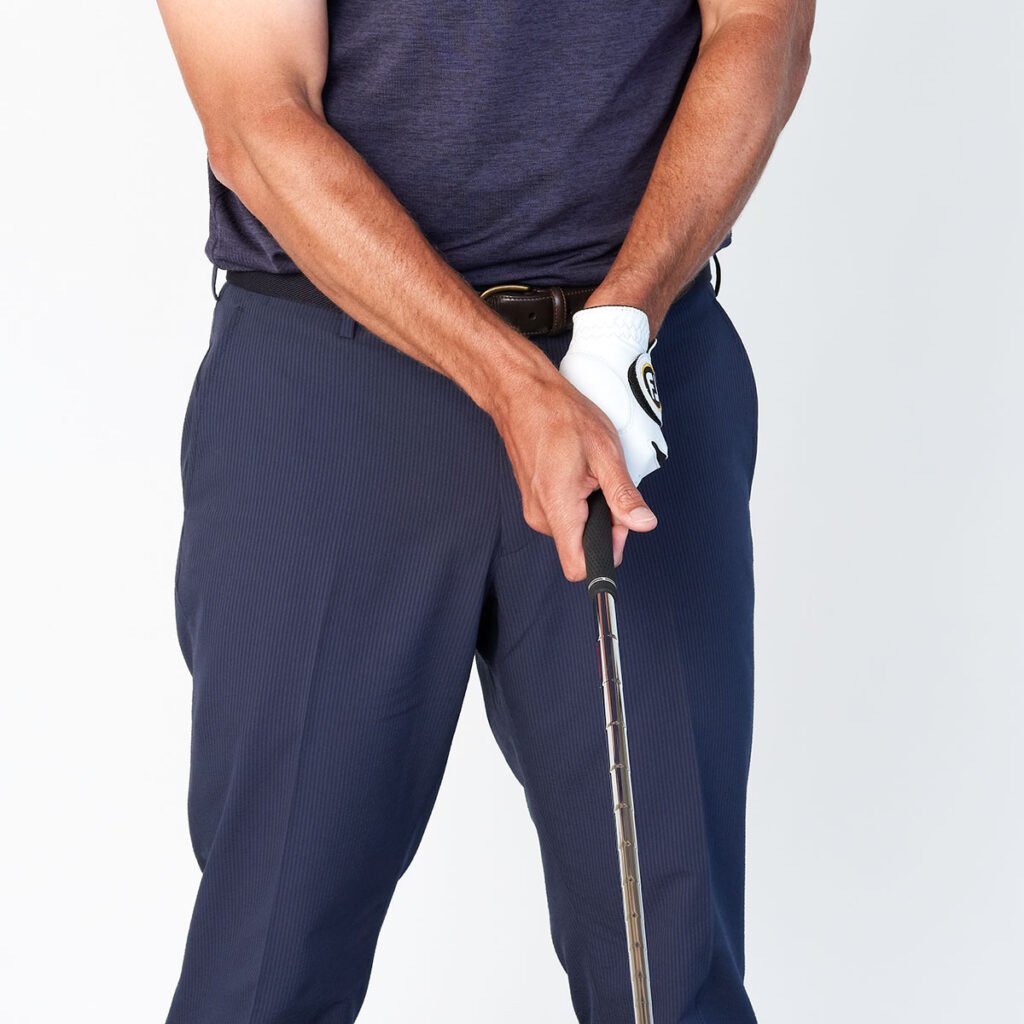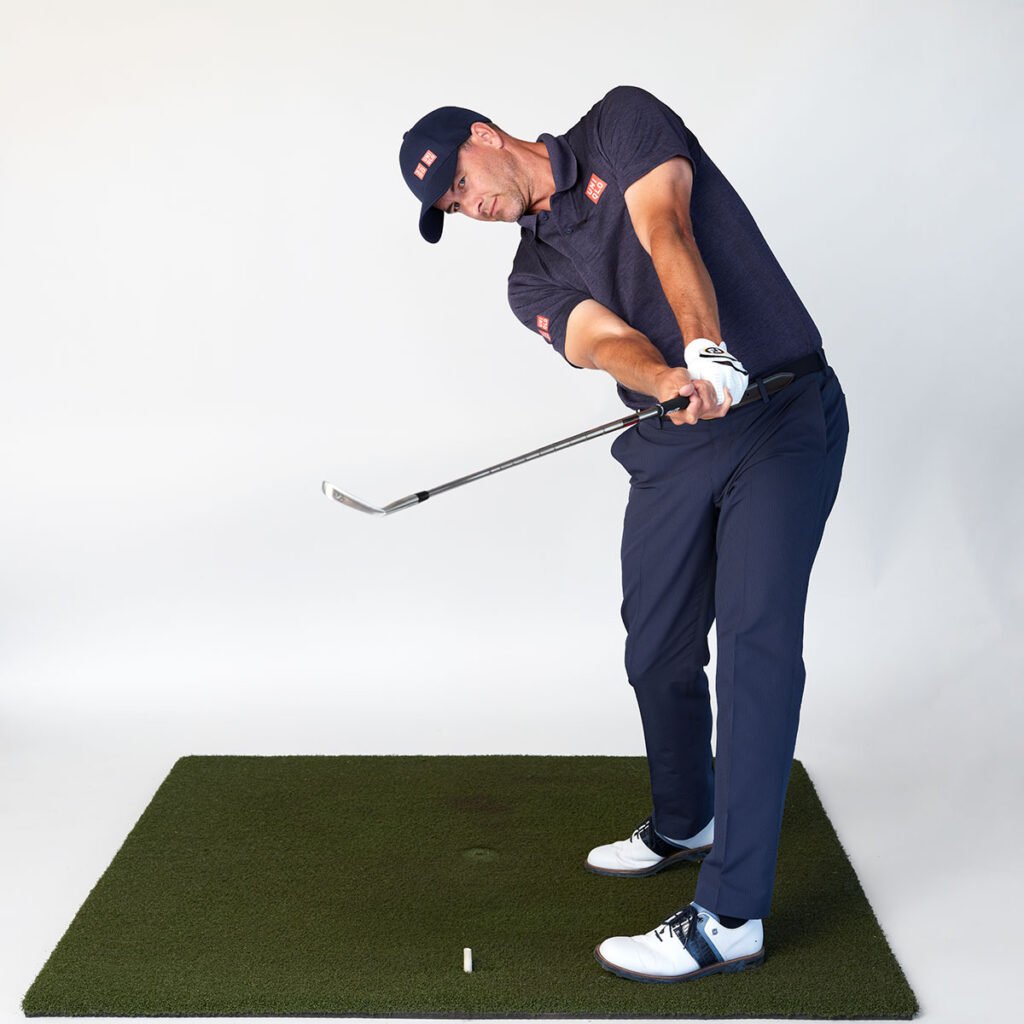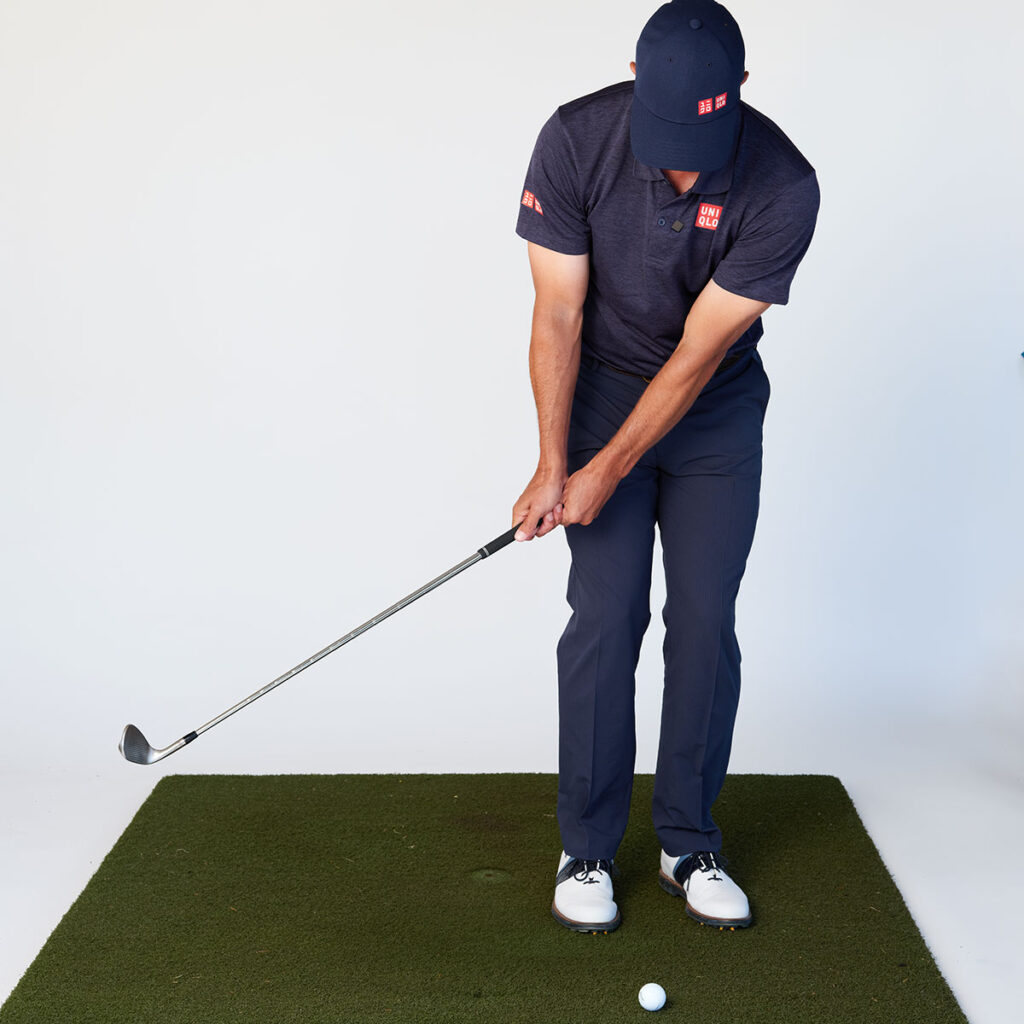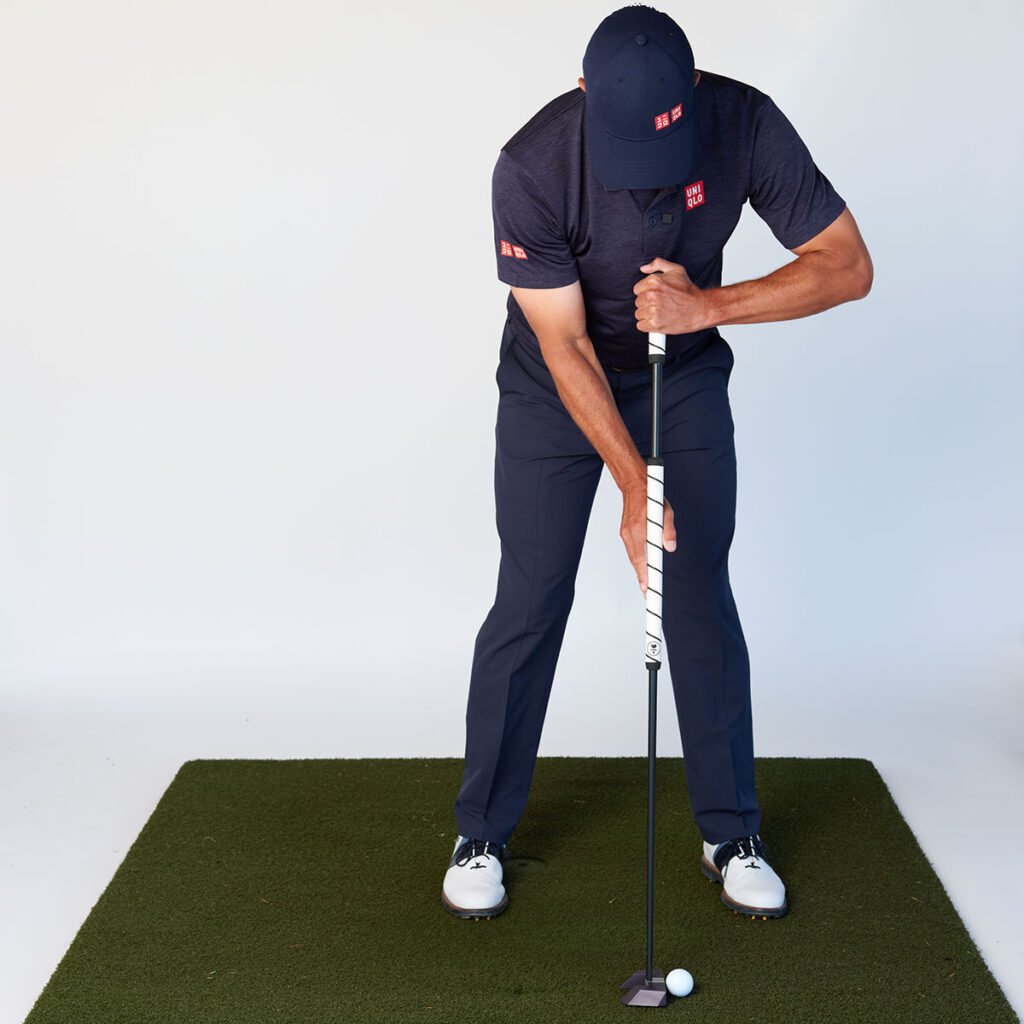Adam Scott has played 386 events on the PGA Tour and even more around the world. He’s logged 17 seasons in the US with 14 wins, one of which was his famous 2013 Masters victory. Along the way, he’s picked up little tips and tricks that have lowered his scores and made him more confident and comfortable over certain shots or in difficult situations. Here’s what you can learn from his notebook.
Don’t forget the fundamentals
Believe it or not, fundamentals are a huge part of my game. Just because you make it to the pro tour, doesn’t mean you forget the very things that made you the golfer you are. Everyone comments on how nice my swing looks, but it’s the basics that make it look good. Stance. Posture. Grip. Alignment. Always be looking at them, during every range session.

1. GRIP: You should See only 2 to 2.5 knuckles
I’ve had a tendency over the years to have a strong grip. When I grip the club, the left hand can sometimes show three to three-and-a-half knuckles if I’m gripping it too strong. Over the years, I’ve developed pre-shot routines to adjust it. I’ve fought a strong grip forever. I’ve even played tournaments where I don’t know how I’m going to hold onto the club because I’m correcting my grip. Going from a strong to a weak grip, you feel you’re not even holding the club. It’s a horrible thing but, ultimately, it’s still going to get a better result, so you have to trust it.
A neutral grip is what I aim for, and I try to see only two to two-and-a-half knuckles. With my right hand, I want to see the ‘V’ created by the right thumb and the rest of the hand pointing to my right shoulder. With my pre-shot routine, I always pre-set the left hand and grip the club with the left hand before I even walk into the ball. It’s an easy way to keep it either weak or neutral.

2. DRIVING: Pause on those crucial tee shots
It’s all about rhythm when I need to hit a fairway in a pressure moment. I try to give myself a pause at the top of the backswing to allow that club to find its spot and then transition very naturally into the downswing. For me, a tendency is to go harder on the golf course with adrenaline flowing. I need to remind myself under pressure to swing smooth and transition naturally and I’ll find the fairway. It’s not as exaggerated as Hideki Matsuyama’s pause; it’s just a brief pause. Practise slowing down at the top of your backswing and see what it can do for you.

3. IRON PLAY: It’s important to finesse – not thrash – your irons
Many amateurs I see hit their irons so hard. But rhythm will help you strike it better more often. It’s definitely something the average amateur should practise. Most amateurs probably have a “driving-range speed” for their swing and then a “golf course swing”. Whenever you’re swinging poorly, or need to swing well under pressure, you’d be surprised how often you’ll pull off a brilliant strike if you focus on smoothness and rhythm. It’s a great swing fix for golfers of any level.
Find your shape
The phrase I always use to describe my best shot shape is “falling left”. When I’m flushing my irons, they generally fly fairly straight until the apex before they gently tumble to the left – like a very soft draw. Figure out what your shot shape is, and work with it. Then, when you’re not swinging it well, you have a shape to try to hit and hope your muscle memory triggers your best swing movements.

4. SHORT GAME: Clip your chips
Chipping requires the most room for error because the strike is so delicate. Hitting a gentle downward strike but taking it reasonably clean allows the most range of forgiveness. You want to get your short game to a point where you don’t need to pure the ball to hit a decent chip. Try setting up with the ball in the middle of your stance and keep your weight even between both feet. Let the loft and bounce on the wedge do the work. You see it all the time with amateurs – they try to generate more height on their short shots with a club that has already been designed to do it for you, whether that’s by opening the face more, leaning back in their stance or swinging faster. Don’t fall into that trap. Swing smoothly and watch the bounce on the sole of your wedge do its thing.
6. ASSESSING YOUR LIE: Be sure to always read the grain
A lot of amateurs probably don’t think about the grain when assessing their shot, but they should. In practice rounds on the PGA Tour, I’ve always tried to understand how the grass, or the slope the ball may be sitting on, could affect the club’s interaction with the ball. This can mean you change club selection from your favourite wedge to something like a pitching wedge and open the face to have more bounce. It can also mean you need to adjust your shoulder plane so that it matches the slope the ball is sitting on. It’s a good idea to see your club’s PGA professional when it comes to learning about the grain around your course. They are best placed to show you how it’s done, what to look for and new techniques to counter certain lies around your course.

5. PUTTING: Find your putter
I’ve settled on a putter I’m really comfortable with. I use L.A.B Golf’s (which stands for “lie angle balanced”) Mezz.1 putter. I used to use the Directed Force model, but the Mezz.1 is smaller and the head design feels and looks better. Last season, I was first on the PGA Tour from 10 to 15 feet and I ranked 18th for strokes gained: putting. Don’t settle for a putter that may look good in the bag but isn’t delivering the results. Take time to get this club right. Sinking putts should always come first.
7. MENTAL GAME: Let go, like Kelly!
One of the big goals in my career is to become a multiple major champion. I’ve had nine top-10s at the majors since my win at the 2013 Masters, including two third placings. To do that requires you to just let go sometimes. You have to stop trying to control the outcome and let it happen. One of my idols in that regard is my good friend and legendary surfer Kelly Slater. One of the general takeaways from my time with Kelly, and other friends who surf professionally too, is the importance of having a stereotypical “surfie” attitude. Surfers are pretty go-with-the-flow-type people. That’s certainly something that comes to mind with Kelly and I think at this point in my career, it’s a good thing to remember. I’ve done a lot of work over the years, and I know instinctively how to swing the club and chip and putt, but at this point I have to just “let go” and do it and not be so controlled. Kelly’s the best at that and it’s why he’s won 11 World Surfing League titles.
Photographs by Peter Tarasiuk
